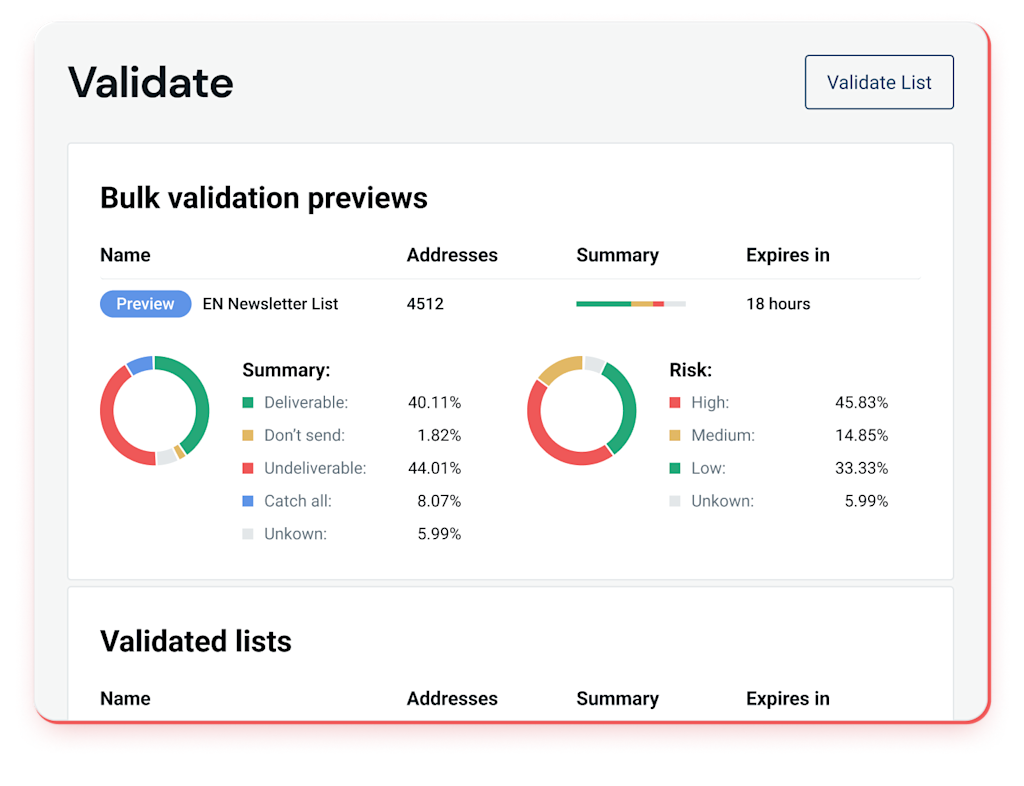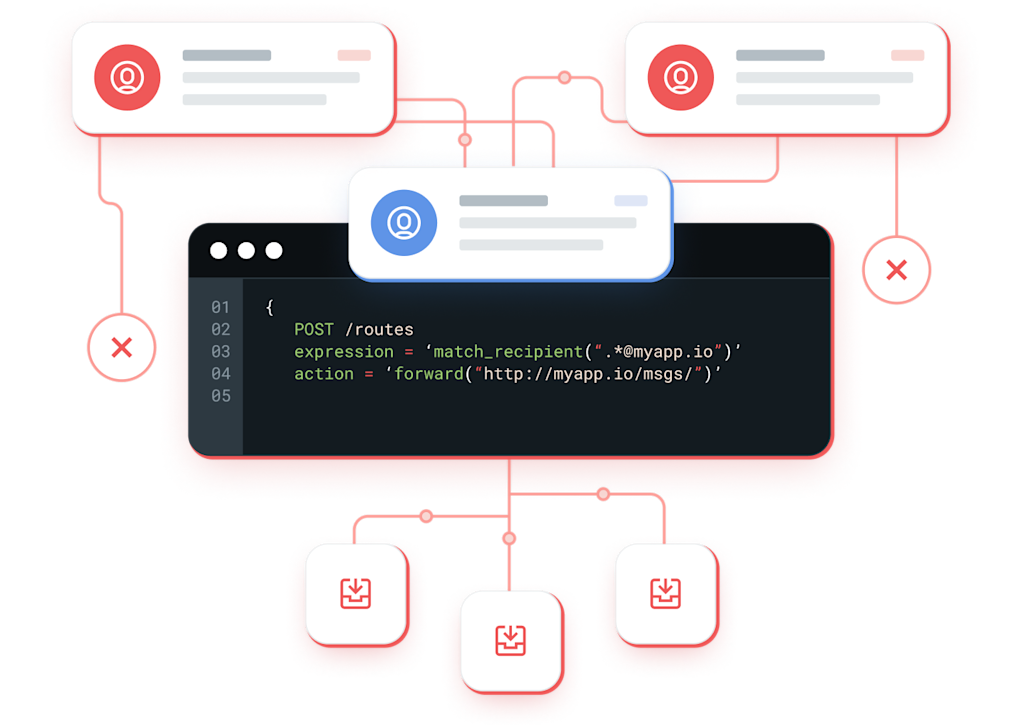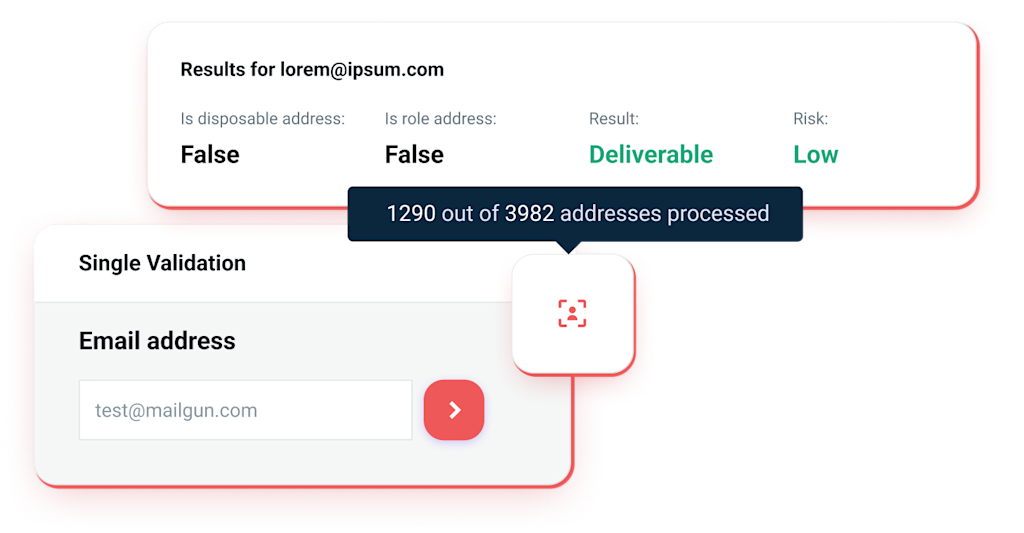
The key to a high-performing email marketing program? Proper email list hygiene.
Everyone knows that proper dental hygiene starts with brushing and flossing. You may see your dentist every six months for a cleaning, but the best way to prevent cavities and keep your pearly whites clean is from boring, regular old routines you learned when you were little. You wouldn’t skip brushing your teeth, would you?
That’s exactly what email marketers do when they don’t practice good email list cleaning. Regularly removing duplicate email addresses from your list, performing an email list verification, and evaluating your segmentation matters for your success.
It may not be exciting, but we all have to do it.
With Mailgun, you can get a clean email list without having to do as much of the tedious legwork yourself. Our email checker does it all for you.
Why email list cleaning is essential: Deliverability
Have you cleaned your email lists lately? If you’re in email marketing, then a quarterly cleanup isn’t optional. Getting rid of email bounces can increase your email list quality. Otherwise, you’re dealing with a plummeting email deliverability rate, and that’s not fun. If your emails aren’t actually landing in inboxes, you can’t get conversions. That’s all of your marketing efforts wasted. International regulations like GDPR and CAN-SPAM make this even more important for legal compliance.
Going through email addresses to find ones that bounce due to grammar, syntax errors, or typos is time-consuming. There’s no way around it unless, of course, you use an email server that can automatically suppress emails to email addresses that have bounced. That’s where Mailgun comes in.


Do you have these four types of bad emails on your list?
Success for most email marketers looks like a rush of new subscribers and increased open rates, click-through rates, and conversion rates for their email marketing campaigns. But if you’re not monitoring these four types of bad emails, you’re putting your entire program at risk:
Bounces: Bounced emails are email delivery failures due to mailbox errors. “Soft bounces” means a subscriber’s mailbox is full or your email is not deliverable for a temporary reason. “Hard bounces” mean you’ll never be able to deliver an email to that address because it’s invalid, incorrect, or blocked. An email verification service can help you verify emails so this happens less frequently.
Inactive recipients: Are your email recipients actually opening their emails from you? Maybe they signed up using a secondary email that’s inactive, or they didn’t mean to opt in at all. Or perhaps they just aren’t as interested in your product or service anymore. You can raise the quality of your email list by periodically checking for inactivity and removing users who haven’t opened an email recently or introduce a segmentation program instead of sending catch-all emails to everyone.
Unsubscribes: If a user unsubscribes, they shouldn’t get another email campaign from you. But so many marketing programs keep emailing after unsubscribes, which leads to spam complaints. An email service provider (ESP) or email marketing service can help you keep track and get rid of users who don’t want to hear from you. This is extremely important for your spam reputation. Marketing automation tools can automatically remove users who request to be removed, freeing up your time for other valuable tasks.
Complaints: Every time an email user marks your email as spam, you get a ding on your IP and domain reputation score. As soon as a subscriber marks you as spam (whether you send spam emails or not!), you must remove them from your email list — not just because of your sender reputation, but because they no longer want to receive emails from you. Failure to do so can result in blacklists (also called blocklists) which prevent your organization from emailing anyone who uses that inbox provider like Gmail or Yahoo. Keep your sender reputation where it needs to be by staying aware of spam complaints as they happen, and taking action to make sure they don’t happen again.
How to make email list cleaning easy
That’s a lot of bad email types. To manage your email list manually, you’d have to conduct frequent list cleanings by hand, including bulk email checks. And chances are, you just don’t have the time or manpower.
It doesn’t have to be a time-consuming process with an email list cleaning tool. Beat the spam folder trap by using an email list hygiene tool to clear out email addresses that shouldn’t be there. With real-time email verification and other list services, you can take some of the pressure off and still reap the benefits of using a clean list.


Email validation to promote list quality
The best times to run your email addresses through a validator is during the signup process on your web forms, or when you’re moving away from your old email service provider (ESP) like Mailchimp or Sendgrid. When validating during the signup process, it helps catch invalid emails proactively with a real-time verification email checker so that you can build a clean email list from the start. That means no disposable emails or misspelled Gmail addresses on your list. Real-time email list verification is just one of Mailgun’s email cleaning tools, and you get a number of validations included every month with your plan.
If you find yourself moving over to a new ESP, it’s imperative to look into their email validation service offerings. Here at Mailgun, we provide a bulk email verification tool that allows senders to upload a CSV or JSON file of emails and clean them up all in one go. Our catch-all suite of services allows you to clean up and send from one place, rather than jumping around applications like NeverBounce or Xverify before actually being able to send your messages.
Need something more user-friendly than a validation/verification API call? You can perform a bulk email verification via the control panel as well by drag and drop or simple file upload, making your verification process fast and easy. Simply remove the high-risk, bad emails for a quality list of deliverable email addresses.
A bulk email list that’s built, not bought
Although building a clean email list from scratch takes time and effort, it’s well worth it. That’s because companies with the best email marketing campaigns are those that send to recipients who actually want to read their messages.
Mailgun recommends using double opt-in, which means that all users must sign up through a form, receive an email with a link, and then click the link in order to verify their email address. Taking this extra step will help ensure a strong, clean email list, lower your bounce rate, and diminish the number of complainers who will mark you as spam for sending to them without their consent.
Plus, building your email list through a double opt-in method ensures that you’re compliant with GDPR, which requires that you gain explicit consent from your recipients before you send messages to them.


Manage emails with email parsing, email segmentation, and tagging
Mailgun makes it easier for developers and email marketers alike to manage millions of incoming and outgoing email messages, which goes hand in hand with maintaining a clean email list. That’s because each email that Mailgun posts to your app comes fully parsed and transcoded to UTF-8. In addition, you have the ability to segment your emails, create mailing lists using the Mailgun Mailing List API, and tag your email messages to categorize them more effectively. Tagging also helps you track each message and makes it easier to do A/B testing.
Use the best email list cleaning service at signup
How do you get a clean mailing list without putting in all the work? It’s easy:
With the use of Mailgun's email validation API, you're able to capture bad emails at signup with a form integration. This form of email validation allows you to cut out misspelled addresses, spam traps, catch-all addresses, and role-based addresses ahead of time before they're entered into your CRM. In doing so, you're able to keep your bounce rate low.


Sign up today
Get started with a bulk email verification service
Go a step further by cleaning up existing bulk email lists with a bulk email verification service. Data deprecates fast, and it's important to go back and remove disposable emails and inactive subscribers, and bulk email validation services make this amount of cleaning as simple as uploading a list.
Once cleaned you're left with valid email addresses, and using both a single verification API with a bulk email verification service puts your best foot forward in terms of deliverability.
Mailgun can help with our email validation services. Sign up for an account now and check out how our scalable bulk email marketing solutions can help your business as it grows.
Check out our plans to bundle together features for better deliverability. For businesses that send over 100,000 emails.
Protect your business
A bad email address is a lost customer
Over 20% of your email database will go bad this year. Invalid email addresses result in unnecessary bounces, drive down your engagement metrics, damage your sender reputation, and cost you money.
How much time and money are you wasting on bad leads?
Mailgun’s entire business is sending email. We send more than 250 billion emails every year, so we’ve hashed the majority of active email addresses. We know what’s deliverable and what’s not.
Plus, our quick email validation software is part of an integrated suite of deliverability features and services. You don’t have to worry about wasting time and effort switching between different platforms and data sources.

Other features
Explore beyond email list cleaning
Mailgun has a variety of features for companies in need of email list cleaning.



